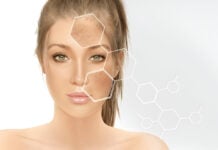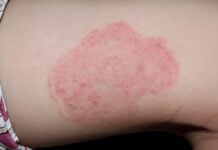In the ever-evolving world of skincare, new trends emerge faster than most of us can update our routines. One of the latest to spark debate is skin fasting, a concept that suggests giving your skin a break from products can help it “reset,” allowing its natural functions to restore balance. But is this trend backed by science, or is it just another wellness myth? Let’s explore whether skin fasting is a skincare myth or a genuine barrier repair miracle.
What Is Skin Fasting?
Skin fasting is the practice of temporarily cutting out or minimizing skincare products, like cleansers, moisturizers, and serums, under the belief that doing so will strengthen the skin’s natural ability to hydrate, exfoliate, and protect itself. Proponents of skin fasting claim that our over-reliance on skincare products can disrupt the skin’s natural barrier and sebum production, making us more dependent on external products over time.
The term was popularized by Japanese skincare brand Mirai Clinical, which recommended going barefaced occasionally to encourage the skin to function independently. The idea has since gained traction on social media platforms, often promoted with promises of glowing, resilient skin with minimal effort.
The Skin Barrier: Friend or Fragile?
To understand whether skin fasting helps or harms, we need to look at the skin barrier. This outermost layer of skin, known as the stratum corneum, serves as the body’s first line of defense against environmental aggressors, bacteria, and moisture loss (Proksch et al., 2008). When the barrier is disrupted, often due to over exfoliation, harsh products, or excessive cleansing, skin can become dry, sensitive, or acne-prone.
In this context, skin fasting may offer benefits. By stepping back from a complex routine, especially if it includes multiple actives like retinoids and acids, individuals might allow their skin to heal from irritation and rebalance its microbiome (Byrd et al., 2018).
However, this doesn’t mean stopping skincare entirely is always the right move. For people with dry skin, eczema, or acne, abandoning moisturizers or topical treatments can actually worsen their condition (Dreno et al., 2016). Skin fasting is not one size fits all, and it requires listening to your skin’s unique needs.
The Science Behind Less-Is-More
Although peer-reviewed studies specifically on “skin fasting” are limited, there is scientific support for reducing product overload. Overuse of skincare products, particularly those with harsh surfactants and alcohol, can impair the lipid matrix of the skin barrier and alter the natural flora (Darlenski & Fluhr, 2012). Giving your skin a break from irritating ingredients may indeed restore barrier function.
That said, most dermatologists advocate for simplification rather than complete cessation. A minimalist routine focused on barrier-supportive ingredients like ceramides, glycerin, and niacinamide may provide better long-term results than cutting out skincare altogether.
When Skin Fasting Might Help
Skin fasting could be beneficial in specific situations:
- After overuse of actives: If your skin feels tight, stingy, or inflamed, it may be over-exfoliated. A short break with gentle cleansing and barrier repair creams can help.
- To identify irritants: Pausing your skincare can help isolate which product might be causing a breakout or rash.
- For oily or combination skin: Some individuals report reduced oil production after stopping moisturizers, though this is anecdotal and varies by skin type.
When It’s Not a Good Idea
For those with chronic skin conditions, skin fasting may be problematic. People with eczema, rosacea, or acne often need consistent use of medicated treatments to manage symptoms effectively. Halting these could lead to flare-ups or complications (Langan et al., 2020).
Moreover, neglecting sunscreen, a crucial skincare step, is never advised. UV damage is a major contributor to premature aging and skin cancer, and even during a skin fast, sun protection should remain non-negotiable.
A Balanced Perspective
Ultimately, skin fasting isn’t inherently bad, but it needs context. Like any wellness trend, it’s easy to fall into the trap of extremes. Instead of viewing it as an all-or-nothing solution, consider using it as a gentle reset. If your skin feels overwhelmed, scaling back to a basic routine that includes a cleanser, moisturizer, and SPF might be the real miracle.
Dr. Shereene Idriss, a board-certified dermatologist, summarizes it well: “Your skin is intelligent, but it still needs support. Simplify your routine if it’s overwhelmed, but don’t abandon it completely.”
Skin fasting taps into a deeper desire for simplicity in a world of 10-step routines and endless product launches. While not a miracle cure, it can offer a break for overworked skin, provided it’s done mindfully. The key is not to strip your skin bare, but to listen to its needs and treat it with care. Sometimes, less really is more.
References
- Byrd, A. L., Belkaid, Y., & Segre, J. A. (2018). The human skin microbiome. Nature Reviews Microbiology, 16(3), 143–155. https://doi.org/10.1038/nrmicro.2017.157
- Darlenski, R., & Fluhr, J. W. (2012). Influence of skin type, race, sex, and age on the skin barrier. Cutaneous and Ocular Toxicology, 31(3), 269–280. https://doi.org/10.3109/15569527.2012.686861
- Dreno, B., Araviiskaia, E., Berardesca, E., et al. (2016). Microbiome in healthy skin, update for dermatologists. Journal of the European Academy of Dermatology and Venereology, 30(12), 2038–2047. https://doi.org/10.1111/jdv.13965
- Langan, S. M., Irvine, A. D., & Weidinger, S. (2020). Atopic dermatitis. The Lancet, 396(10247), 345–360. https://doi.org/10.1016/S0140-6736(20)31286-1
- Proksch, E., Brandner, J. M., & Jensen, J. M. (2008). The skin: an indispensable barrier. Experimental Dermatology, 17(12), 1063–1072. https://doi.org/10.1111/j.1600-0625.2008.00786.x












